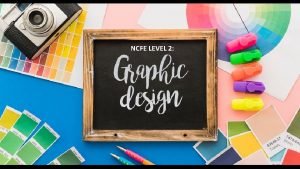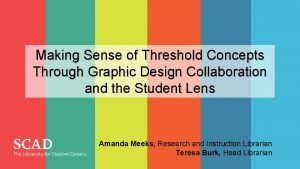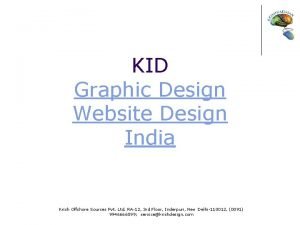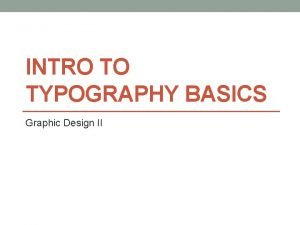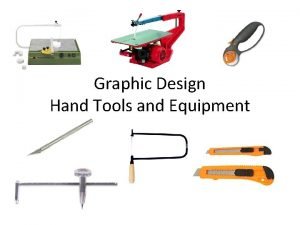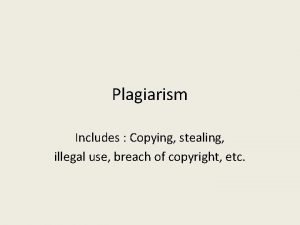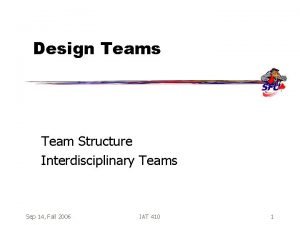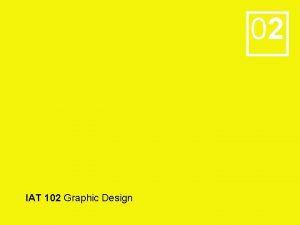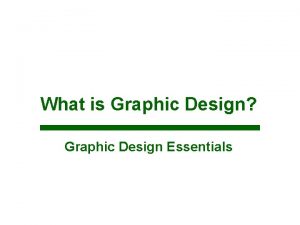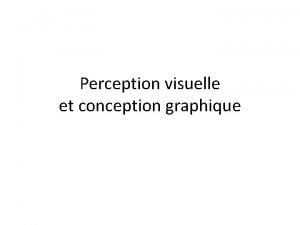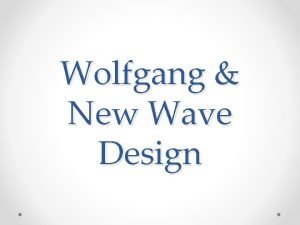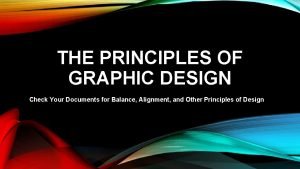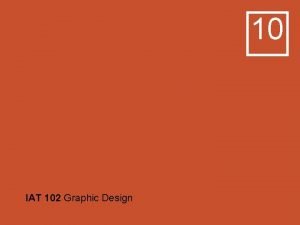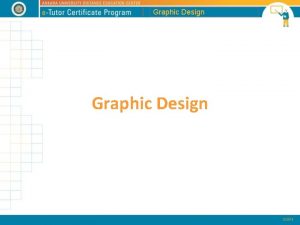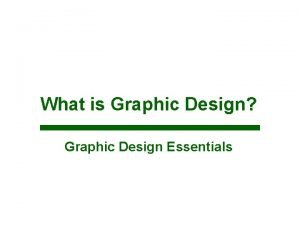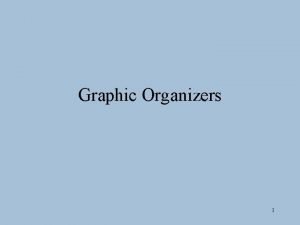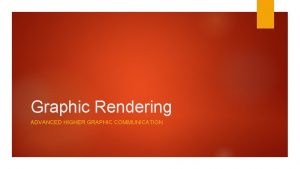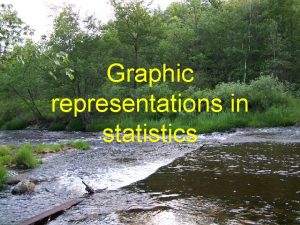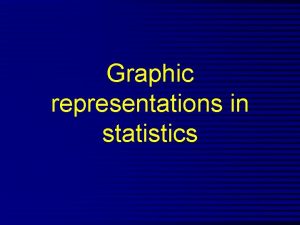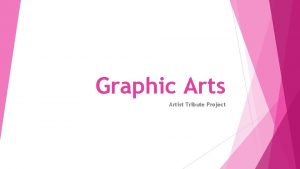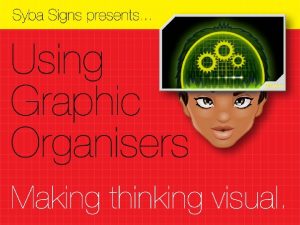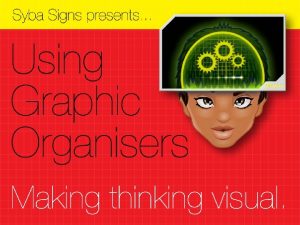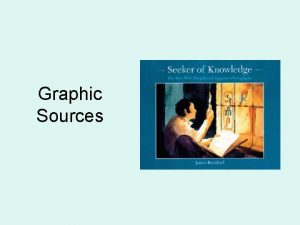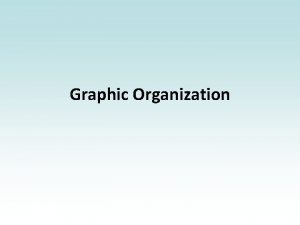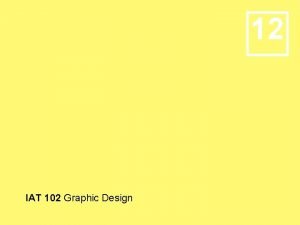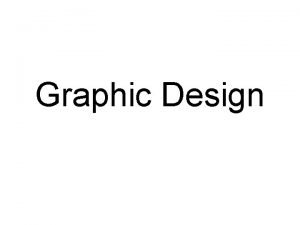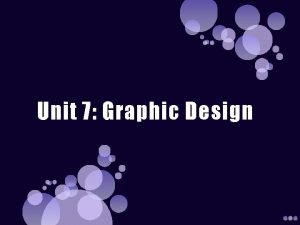Graphic Design Graphic Design What is Graphic Design




















- Slides: 20

Graphic Design

Graphic Design What is Graphic Design? • Graphic design is considered as a means for communication (Barnard, 2013) and expressed in functions or the tasks that graphics perform. • It includes various, prevalent and effective functions. People, who cannot speak or write in the same language, can communicate through graphic design, which in fact includes a common language.

Graphic Design Functions of Graphic Design • Graphic design has social, economic and cultural functions as a whole. As an individual, there are three main functions of graphic design as declared by Hollis (1994):

Graphic Design Components of Graphic Design • Line is a design element which is used to connect the points to form a curved or straight line. It is a basic element to build a shape or construct a design. There are three types, namely; dotted line, solid line, and dashed-line

Graphic Design Components of Graphic Design • Shape (form) is everything having a height and width that can be measured. The best known shapes are the rectangle, circle, and triangle. It can be grouped into three; namely character, symbol and real shape (form) by its nature.

Graphic Design Components of Graphic Design • Colour acts as a supporting element in the design of an object. It acts as an identity, conveys a message or distinguishes the nature of visual forms clearly. In practice, colour is dealt under two groups.

Graphic Design Components of Graphic Design • Texture is the surface appearance of an object. In practice, it is often known as a pattern of an objects’ surface (e. g. carpet surfaces, clothing, bark, paint, canvas). If a texture is recognized by touching, then it is a real texture. If it is recognized by seeing, it is called as a visual or artificial texture.

Graphic Design Components of Graphic Design • Tone is composed of main colours with transverse colours or grey mix. It is also known as light-dark tones of any colour. Hence, tone is related to lightness-darkness of surfaces. It can be used in surfaces or other design elements such as line (Öztuna, 2007).

Graphic Design Components of Graphic Design • Size expresses the dimensions of an object. It can be defined as the arithmetic relation within the whole itself or among its parts. The factors such as contrast, emphasis, distance, position, depth, etc. affect the perception of objects (Gürer & Gürer, 2004).

Graphic Design Components of Graphic Design • Direction is the balance or structure of the objects. It can be affected by many factors such as structure used in objects, concept, figure or powerful or attractive lines, being at right or left side, etc. (Genç & Sipahioğlu, 1990).

Graphic Design Principles of Graphic Design • Balance means equal distribution of weight

Graphic Design Principles of Graphic Design • Proximity means creating relationship between elements by organizing or grouping them into together.

Graphic Design Principles of Graphic Design • Alignment allows us to create order and organisation. Aligning elements allows them to create a visual connection with each other.

Graphic Design Principles of Graphic Design • Repetition strengthens a design by tying individual elements together. It helps to create association and consistency. Repetition can create rhythm (a feeling of organized movement).

Graphic Design Principles of Graphic Design • Contrast is the juxtaposition of opposing elements (opposite colours on the colour wheel, or value -- light/dark, or direction -horizontal/vertical). Contrast allows us to emphasise or highlight key elements in your design.

Graphic Design Graphical Organisers • Graphical organisers are visual and graphic displays depicting the relationships between facts, terms or ideas within a learning task. • They help students to learn consolidating information into a meaningful whole (Fisher & Schumaker, 1995). • They are also referred to as knowledge maps, concept maps, story maps, cognitive organizers, advance organizers, or concept diagrams.

Graphic Design Graphical Organisers • K-W-L+ or K-W-L-H method, one of the least known graphic organisers, is a group instruction activity developed by Ogle (1986). It serves as a model for active thinking during reading. It provides a framework for learning used across content areas to help students for becoming active constructors of meaning (Ogle, 1996).

Graphic Design Storyboarding • Storyboards are visual organisers, typically a series of illustrations displayed in sequence for the purpose of pre visualizing a video, webbased training, or interactive media sequence (Truong, Hayes, & Abowd, 2006). • Storyboards are also used to pre-visualize a website or an application, although, in that case, wireframes are typically used as part of an iterative design process.

Graphic Design Storyboarding A storyboard should convey the following information: • What characters are in the frame, and how are they moving? • What are the characters saying to each other, if anything? • How much time has passed between the last frame of the storyboard and the current one? • Where the ‘camera’ is in the scene? Close or far away? Is the camera moving?

Graphic Design Conclusion • Visuals are of key importance in e-learning. Moreover, there are numerous ways of presenting the content for the different purposes of learning. • Particularly while using the presentation method, instructors should avoid using long sentences and prefer explaining the content by using visuals. • There are many kinds of software which helps us to shape the information to be presented or delivered.
 Graphic weight meaning
Graphic weight meaning Ghost graphic story graphic and wayfinding
Ghost graphic story graphic and wayfinding Ncfe graphics
Ncfe graphics Threshold graphic design
Threshold graphic design Offshore graphic design
Offshore graphic design Orphan graphic design
Orphan graphic design Graphic design tools and equipment
Graphic design tools and equipment Jasper johns plagiarism
Jasper johns plagiarism Shepard fairey
Shepard fairey Design team structure
Design team structure Iat 102
Iat 102 Visual communication and graphic design essentials
Visual communication and graphic design essentials Pictorial modernism
Pictorial modernism Gestalt graphic design
Gestalt graphic design My dream job designer
My dream job designer Graphic design artist statement
Graphic design artist statement Graphic design process
Graphic design process Shitao landscape
Shitao landscape New wave design movement
New wave design movement Alignment definition graphic design
Alignment definition graphic design Graphic design
Graphic design


